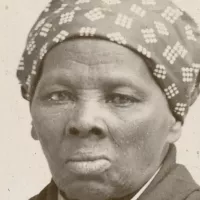Video is an electronic medium used for recording, copying, playing, broadcasting, and displaying moving images. It has evolved significantly, starting with mechanical television systems. These were soon superseded by cathode-ray tube (CRT) systems, which themselves have been replaced by modern flat-panel displays. This evolution reflects technological advancements in visual media and display technologies.
1951: Analog Video Tape Recorder Commercially Introduced
In 1951 the analog video tape recorder was commercially introduced.
1951: First VTR Captures Live Images
In 1951, the first video tape recorders (VTR) captured live images from television cameras by writing the camera's electrical signal onto magnetic videotape.
1956: VTRs on Sale
In 1956, Video Tape Recorders(VTRs) were sold for around US$50,000, and videotapes cost US$300 per one-hour reel.
1971: Sony Sells VCR Decks and Tapes
In 1971, Sony began selling videocassette recorder (VCR) decks and tapes into the consumer market.
1997: Commercial Introduction of DVD
In 1997, the DVD was commercially introduced, leading to a decline in sales of videotape and recording equipment.
2006: Commercial Introduction of Blu-ray Disc
In 2006, the Blu-ray Disc was commercially introduced, further contributing to the decline in sales of videotape and recording equipment.
2010: Vertical Video at 5% of Viewing
In 2010, vertical video accounted for only 5% of video viewing.
2013: Digital Cameras Surpass Film Cameras in Hollywood
Since 2013, the use of digital cameras in Hollywood has surpassed the use of film cameras.
2015: Growth of Vertical-Video Viewing Highlighted
In 2015, Mary Meeker highlighted the growth of vertical-video viewing in her 2015 Internet Trends Report, noting that it had grown to 29% of viewing.
2022: Video Transport Over Networks
In 2022, Video may be transported over networks and other shared digital communications links using, for instance, MPEG transport stream, SMPTE 2022 and SMPTE 2110.
Trending

6 months ago David Muir Discusses Life Off Camera as 'World News Tonight' Dominates Ratings.

25 days ago Martha Stewart's Holiday Collection Returns for 2025: Decor and Dining Favorites!

Ladd McConkey is a professional American football wide receiver currently playing for the Los Angeles Chargers He was drafted in...

Jason Pierre-Paul is an American professional football linebacker who has achieved considerable success in the NFL Drafted by the New...
21 days ago Trump defends Tucker Carlson's Nick Fuentes interview amid antisemitism concerns.
Fort Stewart is a U S Army post primarily located in Liberty and Bryan counties in Georgia also extending into...
Popular
Matt and Ross Duffer known as the Duffer Brothers are...
Aftyn Alyssa Behn is an American politician currently serving as...

Candace Owens is an American conservative political commentator and author...

Ilhan Omar is an American politician currently serving as the...

XXXTentacion born Jahseh Dwayne Ricardo Onfroy was a controversial yet...

Harriet Tubman was a pivotal American abolitionist and social activist...

